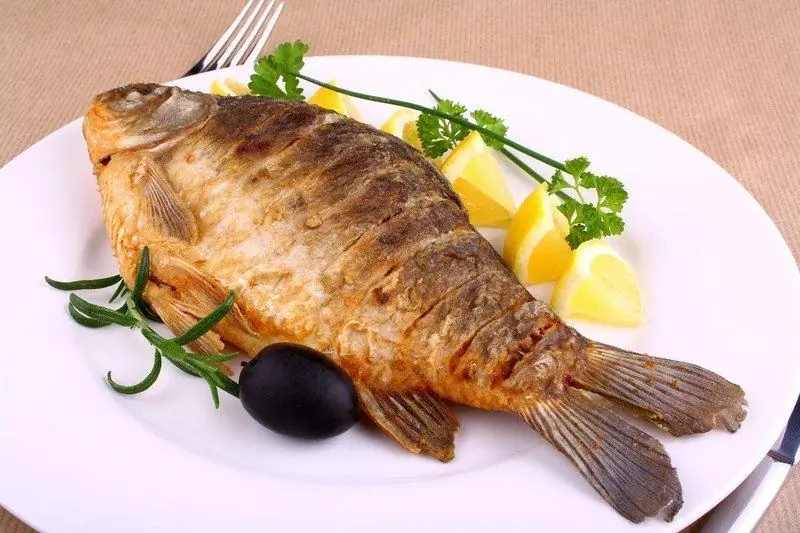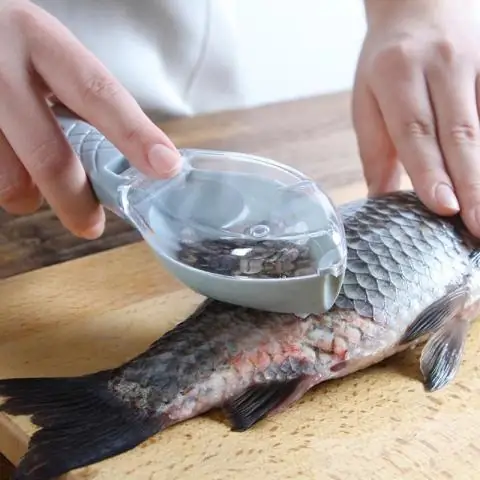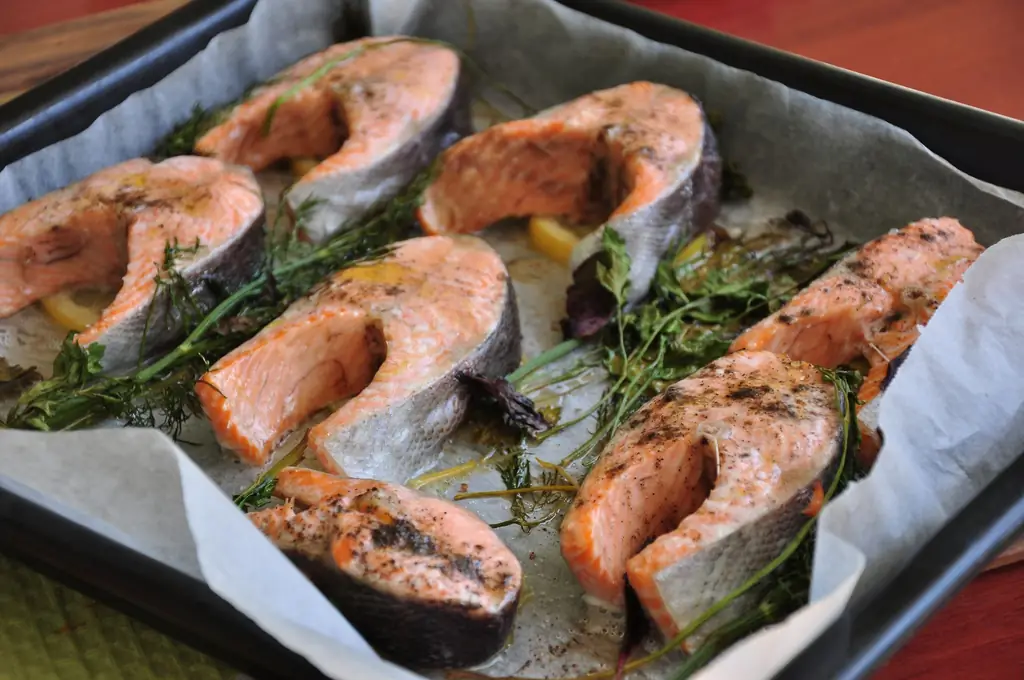
Table of contents:
- Author Bailey Albertson [email protected].
- Public 2023-12-17 12:53.
- Last modified 2025-06-01 07:32.
Secrets of delicious fish: what absolutely should not be done when frying

Many housewives, knowing about the benefits of fish and its taste, often refuse to cook it, preferring simpler products with which everything is simple and clear. But in reality, working with different fish is not difficult at all, the main thing is to know the basic rules and clearly understand what should not be done in any case. Remembering only 10 prohibitions, you can cook deliciously and correctly.
Prohibitions on frying fish
Frying in a pan is the easiest way to heat fish, which is often liked by everyone, which cannot be said about boiled products or steamed ones. To make the fish really tasty and juicy, you need to know about the main prohibitions, ignoring which can ruin your meal:
- Low frying pan temperature. The surface must be well heated before frying, otherwise you will have to remove the stuck food in pieces.
-
Frequent overturning. During frying, a crust forms on the surface of the piece, which allows you to retain moisture inside the product. Considering how fragile the fish is when cooking, it is best to reduce the amount of turning and other mechanical stress in the pan to a minimum. If you touch the product too often, the crust will be damaged, and the liquid will leak out, and as a result - an ugly appearance, a broken texture and insufficient juiciness.

Fish fried in a pan When frying fish, do not bother it often and turn it over
- Defrosting in warm or hot water. The only correct way to defrost such a delicate product as fish is to move from the freezer with sub-zero temperature to the refrigerator, where it is kept at a low but positive temperature. If it is placed in hot water, left to thaw in the heat, or immediately thrown into a pan, then the meat will simply crumble, and it will no longer be possible to cook it in a whole beautiful piece.
- River fish without soaking. All types of river fish meat have a specific smell and taste of silt, algae. In addition, fresh water bodies are a more favorable environment for the development of microorganisms than salty sea water, therefore additional treatment will be required. To get rid of the smell and disinfect the meat, you need to soak it in cold water for 1-2 hours, and then place it in a saline solution (a tablespoon in a glass of water) for 10-15 minutes.
-
Insufficient roast. Fish (both river and sea) can contain parasites and dangerous microorganisms, so it's better not to eat it raw. When frying, be sure to pay attention to the fact that the piece is completely cooked.

Fish on a plate If the fish is not completely cooked, then it can be dangerous to health.
- Long frying. Raw fish can be dangerous, but overcooked fish is simply tasteless and dry, so it is important not to overexpose it in the pan.
-
No dry fish without batter. Fatty varieties are excellent fried and turn out to be tasty if the temperature and time regime are observed, but skinny ones (cod, navaga, silver hake, pollock, flounder, pike perch) themselves will turn out to be too dry and tasteless. Batter will come to the rescue - a batter made of flour and eggs, which will immediately take on a crust in the pan and prevent drying out.

Fish in batter Dry fish are best fried in batter
-
Frying from the skin. If you are planning to cook fried fillet, then in no case put it on a hot frying pan with a skin - it will instantly curl up, and you will not get an even piece. First, the side of the meat is fried, and only then it is turned over onto the skin.

Fish on the skin It is better to start frying fish with meat, because the skin will quickly curl up and deform the piece
- Lots of fish in the pan. To get a beautiful and crispy crust, there must be a distance between the pieces, they cannot lie close, otherwise they will be stewed more than fried. Better to take your time and spread the fish in small portions.
-
Removing the skin before frying. Without the skin, when frying, there is a high probability that the fish will simply fall into pieces - the finished fibers simply have nothing to hold on to. Therefore, it is better to leave the skin, and if necessary, remove it when ready.

The skin is removed from the fish Before frying, do not remove the skin from the fish - so it can fall apart
Read about how to properly and tasty fry cutlets in our new article -
When cooking delicious fish, it is important to understand the nuances. So, do not overcook or undercooked the product, often turn over or peel off the skin in advance. Such subtleties will allow you to get a really worthy result and the fish will delight you not only with benefits, but also with taste and appearance.
Recommended:
How To Easily Peel Off The Scales Of A Perch, River Or Sea, And Quickly Cut It + Video

Why is perch useful? Step-by-step recommendations for cleaning, cutting and preparing perch for cooking. Features of cleaning and cutting frozen fish
The Better To Feed A Kitten: Natural Food, Ready-made Dry And Wet Food, What Foods You Can And Cannot, Feeding Rules, How Many Times A Day

Kitten feeding rules. Veterinarian recommendations. Features for every age. Prohibited and permitted products, prepared feed. Feed reviews
How To Deliciously Cook Sea And River Fish In The Oven (recipes, Photos And Videos)

Step-by-step recipes for cooking fish dishes in the oven. Necessary products, advice, master classes
10 Main Prohibitions Of Christmas: What You Absolutely Shouldn't Do

In order not to cause trouble, try not to swear at Christmas, not to clean the house and not to sew, it is also not allowed to guess, borrow money and leave untouched dishes on the festive table
Rare Perennials That Absolutely Everyone Will Admire

Rare perennials that even neighbors will admire: 5 most beautiful and unusual
